MedievalReporter.com
Covering history's most marvelous millennium
Join our newsletter!

Covering history's most marvelous millennium
Covering history's most marvelous millennium
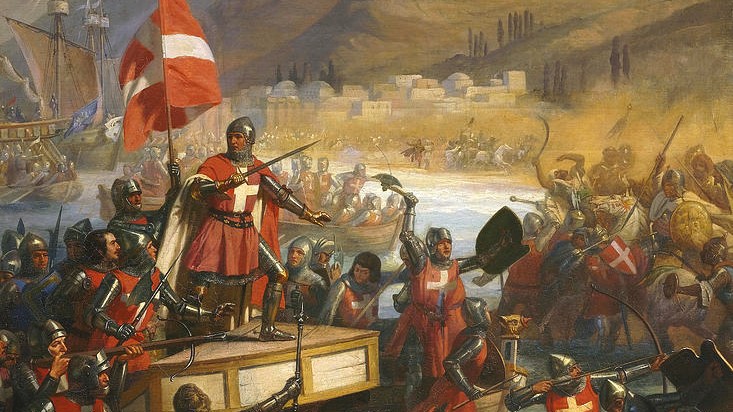
Having fought muslim enemies for centuries, the Knights Hospitaller confidently manned the walls of Smyrna around the turn of the 15th century. The Turko-Mongol warlord Timur, also known as Tamerlane, was threatening to attack them. As a renowned medieval military order, the Hospitallers had seen (and beaten) numerous Islamic armies before. Beating back this emir would make for another great achievement. But the Timurid army turned out to be their most fearsome foe yet.
Grab a short intro to the Knights Hospitaller from our Medieval Guidebook.
Having been kicked out of the Holy Land by their muslim enemies, Jerusalem was now permanently out of the sight of the Hospitallers. Nevertheless, they tried to stay true to the Crusading spirit. So they tried to attack other Islamic states wherever they could.
As it happened, Anatolia had been overrun by the (muslim) Seljuq Turks. From the city of Smyrna (now known as İzmir, Turkey), they took to maritime raiding. The Turks thus became a threat to (christian) shipping in the Aegean Sea.

The pope soon called for a crusade against Smyrna. The Knights Hospitallers, by then based on Rhodes, gladfully accepted this opportunity to enhance their influence. In 1345, they definitively conquered the harbor of Smyrna and the castle guarding it.
However, that was as far as they got. The Turks held on to the acropolis towering over the rest of the city. Neither side could drive the other out.
An awkward situation developed, not unlike Cold War Berlin. The crusading Hospitallers controlled the harbor and the “sea castle”. Turkic soldiers occupied the “land castle” and the rest of Smyrna.
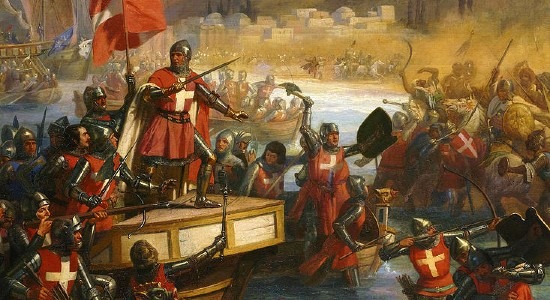
– advertisement –
– article continues below –
The situation in Smyrna remained this way for over 50 years. Meanwhile, the Central Asian warlord Timur envisioned himself as the second coming of Genghis Khan. And he did everything he could to prove his point.
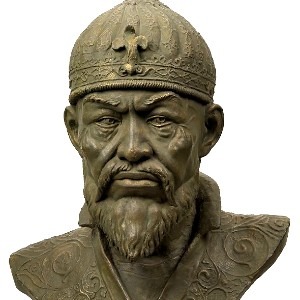
He stormed west, all the way from Uzbekistan to Anatolia. To demonstrate he was the greatest Turkic ruler, he invaded and defeated the Seljuqs. He even captured their sultan in battle.
Now the situation in Smyrna came to Timur’s attention. Despite being a muslim, he had nothing per se against the christian Hospitallers there. But precisely because there were still Turks present in the city, Timur felt compelled to attack.
Not the people to really distinguish one enemy from the next, the Timurids simply aimed to drive out both the Hospitallers and the Turks. Control of Smyrna was their primary objective here. And so the Knights Hospitaller got sucked into the Seljuq-Timurid conflict.
Fortunately for the Knights, their grandmaster was not oblivious to the threat looming from the east. Timur’s savage reputation preceded him wherever he went. The Hospitallers would not naively hope to talk reason into him.
They were going to weather this storm as best they could.
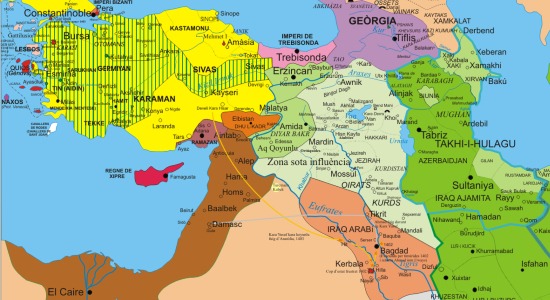
The garrison of Smyrna consisted of 200 well-trained Hospitaller knights. To stimulate them to give it their all, their commander increased their pay to the humongous sum of 100 florins per year. (To give an idea, the architect of the Florence Cathedral received a comparable salary.)
The Hospitallers also dug a deep ditch around their castle to prevent the enemy from rolling up siege material to the walls. They also inundated the immediate surroundings, leaving only a small strip of land for entry and exit. The creation of this isthmus made it even easier to defend their fort.
Meanwhile, a stream of munitions, supplies and reinforcements poured into the port of Smyrna. The mood of the garrison grew confident. Even Timurid historians thought the stronghold impregnable.
Still, the Hospitaller grandmaster sent an envoy to Timur. During negotiations, Timur declared that he would spare Smyrna if the Knights Hospitallers converted to Islam. True to their crusader nature, the envoy unsurprisingly declined the offer.
Then, on December 2, 1402, Timur arrived in front of Smyrna at the head of his army. He immediately ordered stone-throwing siege engines to be constructed and set them to work. The Hospitallers dug in for a long and terrifying bombardment.
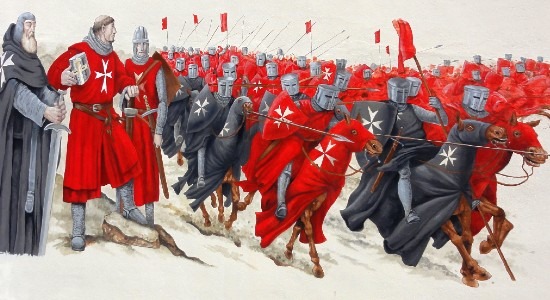
While Timur’s trebuchets raged against Smyrna’s walls, he had the ditch infilled that the Hospitallers had dug. This allowed his army to get rams and such underneath the walls. His ships also dumped huge amounts of stone in the harbor’s entrance, blockading the castle from all sides.
The defenders threw everything they had at Timur. The besiegers were constantly bombarded with arrows, stones and incendiary pots filled with Greek fire. The Hospitallers successfully beat back a direct assault on the walls.
Consequently, the Timurid army set to undermining the fortifications. They dug tunnels underneath the Hospitaller castle. When they lit the fuse of the explosive materials they installed there, the castle’s outer wall exploded – launching a handful of hapless defenders sky-high.
The Knights Hospitaller reorganized themselves into formation after the chaos of the explosion. Savage fighting ensued in the castle’s courtyard, as Timurid soldiers poured through the breach. With the finest fighters of Christendom in their ranks, the Hospitallers attempted a desperate last stand against the armies of the East.
In the event, the Knights were quickly overwhelmed by the multitude of Timurids. The crusader cause was lost was once more. The christians broke rank and fled.
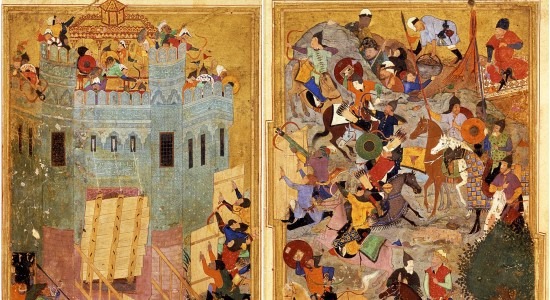
Hospitaller reinforcements were on their way at that time. But when their ships approached the disorderly siege scene at Smyrna, the besiegers responded in typical Timurid fashion. Instead of bombarding the ships with stones, the trebuchets lopped decapitated Hospitaller heads on their decks to scare them away.
That did the job. Combined with the sight of their brothers-in-arms fleeing the field on land, the ships turned tail before reaching the harbor. Timur’s soldiers then unleashed fury upon the christians left in the city and massacred them en masse.
In control of Smyrna now, Timur reorganized the city to prevent another awkward, “Berlinesque” situation. Having driven out the Turks out of the acropolis earlier, he strengthened this hilltop “land castle”. The rivaling ex-Hospitaller sea fort was demolished.
The fall of Smyrna deeply disturbed a Spanish monarch, who therefore suggested another crusade to the pope. The idea came to nothing as Christianity overall was quite favorable towards the Timurids, since they had been such a menace to the infidel Turks.
Timur himself took great pride in the taking of Smyrna. The Turks had failed for over fifty years to drive the Hospitallers out. Determined to show he was the greatest Turk alive, driving these crusaders back into the sea was precisely the achievement he was looking for.
The siege of Smyrna turned out to be yet another success story in this general’s undefeated career.
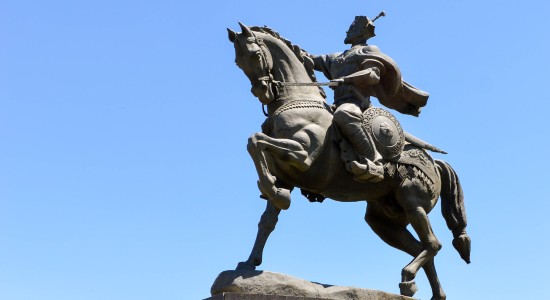
– advertisement –
– article continues below –
Disclosure: we work hard to provide you with exclusive medieval reports and guides. To make the Middle Ages accessible to everybody, we’d like this information to remain FREE. Therefore, some of the links below are affiliate links, meaning – at no additional cost to you – we will earn a small compensation if you click through.
Comments are closed.
Greetings from Florida! I’m bored at work so
I decided to check out your site on my iphone during lunch break.
I enjoy the info you provide here and can’t wait to take a look when I get home.
I’m surprised at how fast your blog loaded on my phone ..
I’m not even using WIFI, just 3G .. Anyways, fantastic site!
Hi, Blythe. So awesome to hear that our content was to your liking! Do explore the rest when you get home. 😉
And thanks for letting us know about your load times. We do our best to keep them to a minimum!
That is a good tip especially to those fresh to the blogosphere.
Short but very precise info… Thank you for sharing this one.
A must read article!
Wow, Katherine! We’re more than grateful for your amazing feedback. 😀
Interesting article.
Glad you liked it, Eddie! Thanks for reading.